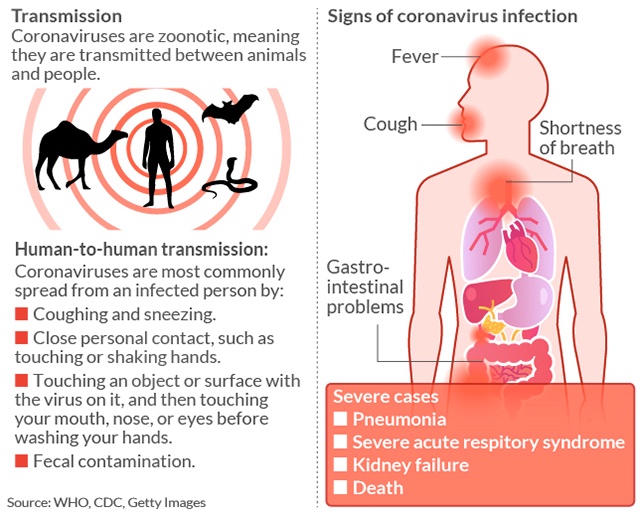There’s one thing about COVID-19 that makes it highly effective in traveling from host to host.
Anthony Fauci, director of the National Institute of Allergy and Infectious Diseases for three decades and one of the leading experts on pandemics in the U.S. for the last four decades, said SARS-Cov-2 is proving to be a unique and peculiar virus, one that he has not seen the like of before.
“ ‘I’ve been dealing with viral outbreaks for the last 40 years. I’ve never seen a single virus — that is, one pathogen — have a range where 20% to 40% of the people have no symptoms.’ ”
He told U.S. lawmakers this month that COVID-19, the disease caused by the novel coronavirus, has taken him by surprise, particularly in one singular way that helped lead to one of the biggest public health crises in a generation.
“I’ve been dealing with viral outbreaks for the last 40 years. I’ve never seen a single virus — that is, one pathogen — have a range where 20% to 40% of the people have no symptoms,” he told a House Committee on Energy and Commerce hearing on the Trump administration’s response to the novel coronavirus pandemic.
The World Health Organization currently estimates that 16% of people with COVID-19 are asymptomatic and can transmit the coronavirus, while other data show that 40% of coronavirus transmission is due to carriers not displaying symptoms of the illness. As a result, public health officials have advised people to keep a distance of 6 feet from one another.
This week, Fauci said the virus may be mutating to become more transmissible. “We don’t have a connection between whether an individual does worse with this or not. It just seems that the virus replicates better and may be more transmissible. But this is still at the stage of trying to confirm that,” he said in an interview with the Journal of the American Medical Association on Thursday that the virus may be mutating to become more transmissible, with high viral loads.
COVID-19 has already proven extremely infectious. A recent University of California, San Francisco, study found that there’s a high load of SARS-CoV-2 shedding in the upper respiratory tract, even among pre-symptomatic patients, “which distinguishes it from SARS-CoV-1, where replication occurs mainly in the lower respiratory tract.” Such a viral load makes symptom-based detection of infection less effective in the case of SARS CoV-2, it said.
Fauci dismissed criticism that federal authorities had created a serious misstep by telling the public not to wear masks during the early days of the pandemic, only to reverse that decision later on. The Centers for Disease Control and Prevention, the White House and even the World Health Organization all reversed their positions on the efficacy of wearing masks over time.
“ ‘There was a paucity of equipment [needed by] our health-care providers, who put themselves daily in harm’s way of taking care of people who are ill.’ ”
“OK, we’re going to play that game,” Fauci said when questioned about the seemingly sudden U-turn in public-health policy. “I don’t regret that because — let me explain to you what happened. At that time, there was a paucity of equipment that our health-care providers needed, who put themselves daily in harm’s way of taking care of people who are ill.”
After two months of obfuscation over the efficacy of face masks, during which New York City became the epicenter of the pandemic in the U.S., and one month after the WHO declared the COVID-19 outbreak a pandemic, U.S. federal authorities said all Americans should, after all, wear face coverings in public settings. Fauci has said he was hopeful that a coronavirus vaccine could be developed by early 2021.
But earlier this week, Fauci said many states have reopened too quickly, and people are not abiding by rules of social distancing. “What we saw were a lot of people who maybe felt that because they think they are invulnerable, and we know many young people are not because they’re getting [this] serious disease; therefore they’re getting infected has nothing at all to do with anyone else when, in fact, it does,” Fauci he told CNN.
In states where coronavirus spread is surging, like Arizona, Texas, Florida and California, he said, “20% to 40% of the people who are infected don’t have any symptoms, so the standard, classic paradigm of identification, isolation, contact tracing doesn’t work no matter how good you are, because you don’t know who you’re tracing.”
Florida reported 11,458 new cases Saturday, the highest number of daily cases since the pandemic began, only second to the daily peak of 11,571 in New York last April. It confirmed nearly 190,052 cases, up from 178,594 cases the day before, which do not account include those who are asymptomatic or pre-symptomatic, and 3,702, up from 3,684 the day before, deaths from the virus. Unlike officials in California and Texas, however, Florida Gov. Ron DeSantis, a Republican, has said the state will not delay its reopening plans, and said the rise is mostly due to young people.
The COVID-19 pandemic, which was first identified in Wuhan, China in December, had infected 11,124,651 people globally and 2,808,003 in the U.S. as of Saturday. It had claimed at least 526,003 lives worldwide, 129,476 of which were in the U.S., according to Johns Hopkins University’s Center for Systems Science and Engineering. Thus far, New York has had the most deaths from COVID-19 in the U.S. (32,137), followed by New Jersey (15,164), Massachusetts (8,149), Illinois (7,005), Pennsylvania (6,746), California (6,318) and Michigan (6,215). Texas has reported 2,592 deaths.
The Dow Jones Industrial Index DJIA, +0.35% and the S&P 500 SPX, +0.45% ended higher at week’s end, after better-than-expected unemployment numbers amid a surge of coronavirus in states that have loosened restrictions.
How COVID-19 is transmitted











Add Comment